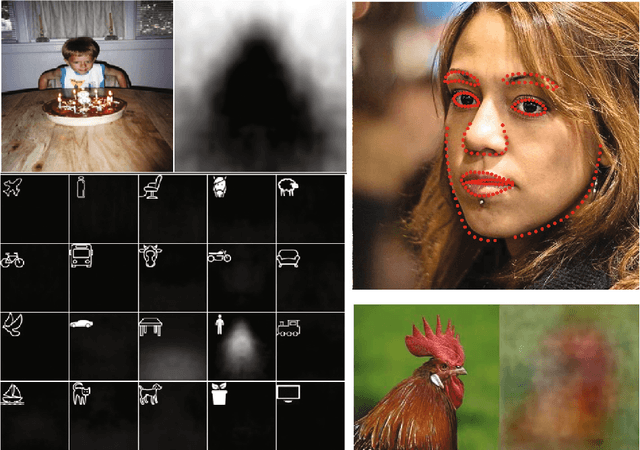Persistent Evidence of Local Image Properties in Generic ConvNets
Paper and Code
Nov 24, 2014
Supervised training of a convolutional network for object classification should make explicit any information related to the class of objects and disregard any auxiliary information associated with the capture of the image or the variation within the object class. Does this happen in practice? Although this seems to pertain to the very final layers in the network, if we look at earlier layers we find that this is not the case. Surprisingly, strong spatial information is implicit. This paper addresses this, in particular, exploiting the image representation at the first fully connected layer, i.e. the global image descriptor which has been recently shown to be most effective in a range of visual recognition tasks. We empirically demonstrate evidences for the finding in the contexts of four different tasks: 2d landmark detection, 2d object keypoints prediction, estimation of the RGB values of input image, and recovery of semantic label of each pixel. We base our investigation on a simple framework with ridge rigression commonly across these tasks, and show results which all support our insight. Such spatial information can be used for computing correspondence of landmarks to a good accuracy, but should potentially be useful for improving the training of the convolutional nets for classification purposes.
 Add to Chrome
Add to Chrome Add to Firefox
Add to Firefox Add to Edge
Add to Edge